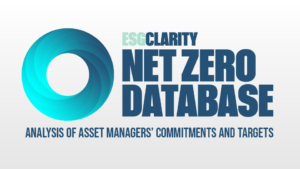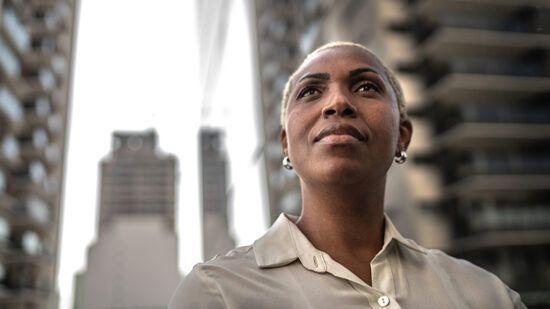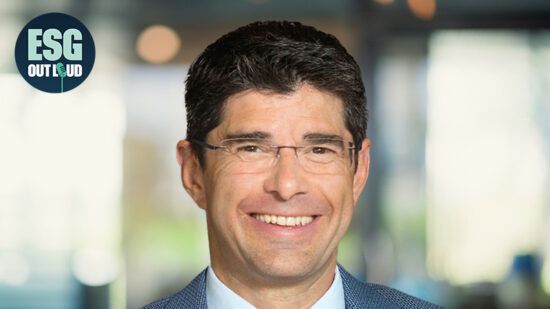In this Green Dream video interview, Clare Wood, portfolio specialist at Stewart Investors, answers questions on the firm’s investment philosophy over the past few decades, engagement progress and trends in the ESG space.
Watch the full video interview above and read the transcript below.
HD: Hello, I’m Holly Downes and welcome back to the Green Dream video series, brought to you by PA Future. Today I am joined by portfolio specialist at Stewart Investors, Clare Wood. Thank you for being here today.
CW: It’s lovely to be here.
HD: First, can you tell me about Stewart Investors and how it is unique to what else is being offered on the market? What are the key themes or investment areas on the fund currently?
CW: Sure. Stewart Investors has been going for over 30 years now. We’re very much long-term, bottom-up equity investors and we’ve really focused on the concept of stewardship. So, we’re stewards of our clients capital and we give it to companies who are going to be well stewarded by management. We look for companies which are great franchises, have exceptional management, solid financials, and we look to invest for them for five to 10 years, certainly over the long term.
It is that focus on quality and long term that really led us towards sustainability. We launched our first sustainability fund nearly 20 years ago. We found when we were looking at companies, those that had structural growth drivers that were driven by sustainability – for example, by contributing to either human development or reducing the use of ecological resources – made our best investments.
When we launched our fund, there was a lot of scepticism around sustainability, but we were convinced it wasn’t a risk, it was actually a driver of returns. And now we’ve now got a 20-year track record to show for it.
HD: And how does Stewart Investors engage with companies and what approaches do you take when it comes to engagement?
CW: Stewardship has always been a key part of our investment philosophy and process. We’ve always engaged with our portfolio companies with a very bottom up investor. We might do one-on-one engagements with companies on particular issues or have strategic engagements across topics like climate change or pollution. There also other areas where we feel taking a collaborative approach gives us greater reach.
We’re quite excited at the moment because we’ve just reached a milestone in a collaborative engagements around conflict minerals in the semiconductor supply chain. We’ve become the founding investor of the Responsible Minerals Initiative Investor Forum.
HD: Could you give me another example of a company that Stewart Investors has invested in for long-term sustainability?
CW: We have a number of companies that we’ve been invested in over 20 years or more. A good example is the Housing Development Finance Corporation in India. It is an Indian bank now and it offers mortgages to low and middle income Indians. It’s been pushing its bank branches out into rural areas to address the rural urban wealth divide and has 8 million mortgages that it has offered to people to drive economic empowerment in India.
The bank has also been offering loans to small and medium enterprises, particularly women as well. This is to help them start their business, provide for their families and drive their economic stability. This is a great example for us of a company that has a sustainable mission and great structural growth drivers as they have been able to improve human outcomes, but are also a fantastic investment for shareholders. That is really the definition of a sustainable investment.
HD: And what are your views on new and ongoing trends in the ESG space this year?
CW: I hope that there’s going to be an increasing recognition that a lot of sustainability issues are cross-cutting. You cannot take issues in isolation or with individual companies. For example, there is a great amount of crossover between, say, climate change and biodiversity, and between biodiversity and social issues and human rights.
For example, in our conflict mineral engagement, when we think about the number of minerals that we’re going to mine out of the ground for the energy transition, you think about where are all those minerals located. Either in land that’s typically populated by indigenous people or in countries with very poor governance, with human rights abuses. How do you square that circle? It’s not easy.
So, there needs to be this greater recognition that actually there are trade-offs involved. And we need perhaps a more nuanced approach to sustainability than ticking a box or just looking at ESG data.
HD: We always end the Green Dream with this question – what is your favourite sustainable food or drink?
CW: I’m going to go for the good old British cup of tea, which could be controversial because of the airmiles involved. Typically, it has not had a great human rights record. But I think about portfolio company, Tata, a consumer products company in India and all the great work it’s done to make agriculture more sustainable, to improve the welfare of the pickers and the growers on its plantation.
I have to believe that international trade drives human development and better outcomes for people, particularly in the poorer countries. And so I’m very happy to drink my British cup of tea.
HD: Great! Well, thank you for being here today Clare, and thank you for watching.








